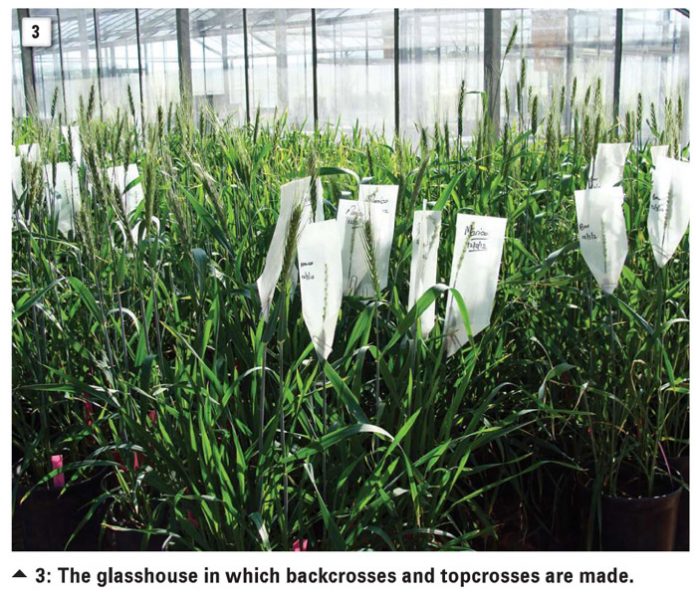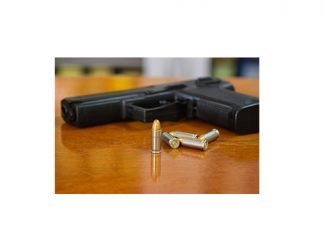June 2018
CATHY DE VILLIERS, DR SCOTT SYDENHAM and NYIKO BALOYI, ARC-Small Grain, Bethlehem
Scab/Fusarium head blight is one of the most important small grain diseases in the world. In South Africa, outbreaks are becoming more severe and frequent due to the changing climate that mediates the development of optimal micro-environmental conditions, which facilitate infection.
In addition, maize/wheat cropping systems, planting of susceptible cultivars and the expansion of irrigation areas favour the spread of Fusarium head blight. Currently there are no fungicides officially registered to control this disease in South Africa and this complicates the control of this disease.
Stubble from no-till may also harbour Fusarium inoculum and this might become a problem when conditions are conducive to infections. It must also be noted that in the world, there are two Fusarium species which have displayed chemical resistance already.
During a recent conference in Brazil, concern was raised during fungicide testing research conducted by different groups over several years, that fungicides of the strobilurin group significantly increase DON mycotoxin levels (6% to 18%) in the harvested grain after treatment. In addition, researchers have also found that BT-maize could host Fusarium spores for longer periods of time, since the stubble will take longer to degrade or decompose.
Severe yield losses (0,5 t/ha to 2 t/ha) may occur depending on the timing of infection and presence of optimal micro-environmental conditions at flowering stage. Infected grain may also contain mycotoxins that are harmful to both humans and animals.
Since there are currently no local resistant cultivars available and no fungicides registered to control scab on wheat, a Winter Cereal Trust project was initiated to improve the Fusarium head blight resistance levels of our current susceptible South African cultivars.
This project combines the use of phenotypic field screening and marker-assisted selection to develop diverse scab and mycotoxin resistant germplasm. DON is one of the most important and prevalent mycotoxins that might accumulate in the seed after Fusarium infection, which has recently received more interest.
The reason why mycotoxins are important is the health issues associated therewith (such as cancer causing/inducing) if ingested for a prolonged period. As these mycotoxins are harmful, there are now new regulations in place, which allow a maximum limit in cereal grains (of ≤ 2 000 µg/kg DON) and derived processed products (such as flour, meal, semolina and breakfast flakes etc of ≤ 1 000 µg/kg DON) meant for direct human consumption.
Mycotoxins are also very important to the barley industry, as these mycotoxins may lead to gushing of the beer. So, both the wheat and barley industries have identified Fusarium head blight/scab management as a national research and development priority.
The question now is how the Fusarium head blight resistance of our local cultivars can be improved to prevent an imminent disaster? Since we know that our local cultivars are not resistant, it is of utmost importance to import resistant donor lines and/or cultivars that have known stable Fusarium head blight resistance QTL/genes from different parts of the world.
In this study, it has become imperative to import well-documented and characterised Fusarium resistant wheat lines that are known to have different types of resistance. Resistance is categorised into five specific types (Table 1) in which we are interested, to incorporate into local germplasm.

These lines/cultivars have mostly been imported from the United States Department of Agriculture as well as CIMMYT, Mexico, as they are the main sources of resistant germplasm collections in the world. These acquired lines are multiplied, since limited quantities of seeds may be imported. Then the lines are tested under artificially inoculated field, laboratory and glasshouse conditions to confirm the resistance, since our local Fusarium isolates may vary from those isolates abroad.
For field-testing, a cocktail (five to seven isolates) of different Fusarium graminearum isolates is used during the extensive and labour-intensive field screening, since F. graminearum is the most isolated from infected samples. In fact, 85% of isolates isolated from local infected samples, are those of Fusarium graminearum. Fusarium graminearum isolates from different irrigation areas are used for artificial inoculations during flowering when the wheat plant is most vulnerable.
Every year, more than 3 000 lines are screened to determine Fusarium head blight resistance levels and those lines that have showed reliable resistance over a two-year period over different localities, are then considered worthy of inclusion in the breeding programme. It is important to note, that more than 90% of all imported lines are not adapted/suited to South African conditions.
Therefore, they need to be planted and then secondarily selected, based on agronomy including plant height, straw strength, general appearance, tiller number, spike length and spikelet number before they can be included into a pre-breeding programme (Photo 1).
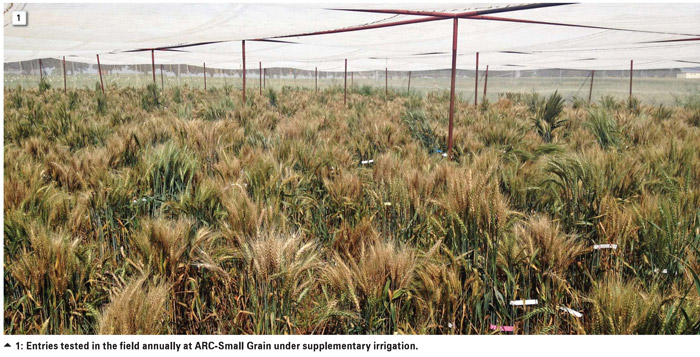
There are currently nine phenotypically validated and molecularly well-characterised resistant/moderate resistant entries, that have been incorporated into the marker-assisted backcross (MAB) programme at ARC-Small Grain (Table 2). There are currently about 70 additional validated Fusarium head blight resistant sources, which have not been characterised genetically.

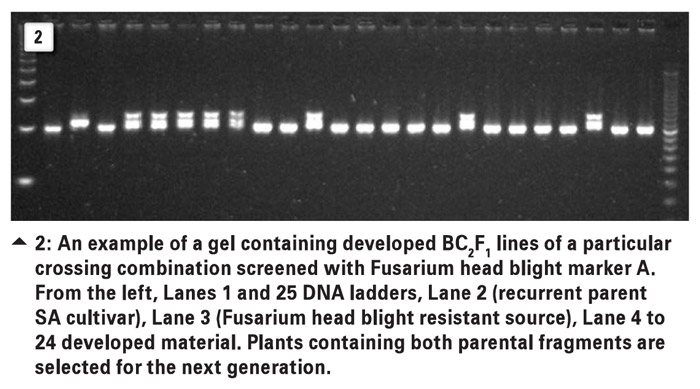 Different crossing combinations with specific pedigrees and target genotypes are screened and selected for marker-assisted selection (MAS) during the seedling stage. DNA is extracted from each single plant to conduct MAS of targeted Fusarium head blight resistance genes/QTL, with an average of four to six linked markers used per crossing combination.
Different crossing combinations with specific pedigrees and target genotypes are screened and selected for marker-assisted selection (MAS) during the seedling stage. DNA is extracted from each single plant to conduct MAS of targeted Fusarium head blight resistance genes/QTL, with an average of four to six linked markers used per crossing combination.
Three to five susceptible high-yielding local cultivars are currently used as recurrent parents for a total of 25 to 35 different pre-breeding combinations. The targeted markers are used to select for the presence of a targeted Fusarium head blight resistance gene/QTL per cross combination (Photo 2).
In the glasshouse, only the MAS selected lines are backcrossed and/or topcrossed further, after being tested (Photo 3). This increases the potential number and frequency of the resistance genes/QTL present/retained in each backcross line, as well as maintains the good quality and yield characteristics that come with the original recurrent parent.
The more targeted, accurate and stricter selection, possible with the MAS on many different combinations, makes the development of a single durable resistant line much more efficient. This marker-assisted programme screens on average 500 plants/lines to 1 000 plants/lines, annually.
On average, 5% to 15% of these lines are selected and retained for the development of the next generation.
MAS/MAB is an imperative and integral part of this project since markers are able to confirm if targeted resistance QTL/genes are present, just a few weeks after germination, compared to more conventional methods, which can take up to five to six months.
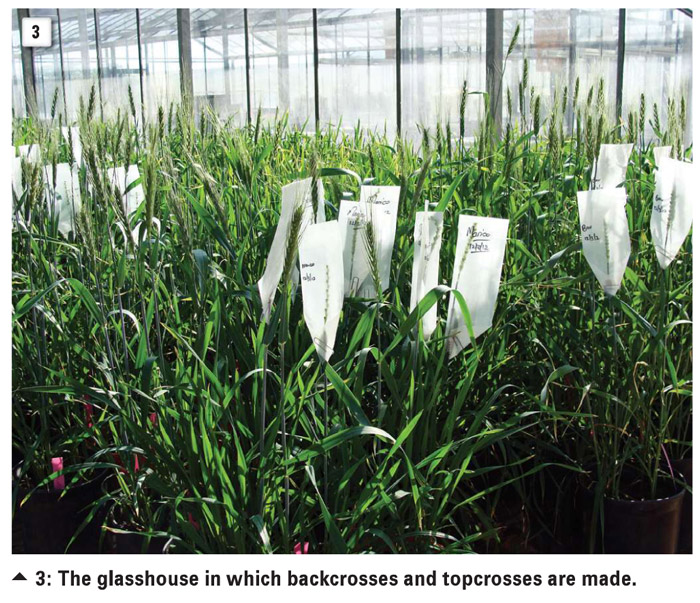 The developed material is planted in the field for Fusarium head blight resistance validation and general performance evaluation. In the next few years, these combinations will potentially contain four to five Fusarium head blight scab resistance genes/QTL stacked from different Fusarium head blight resistance sources. Significant progress on germplasm development has already been made with Fusarium head blight/scab resistant entries and nurseries released annually from 2015, as this pre-breeding programme is a publicly funded project (Photo 3).
The developed material is planted in the field for Fusarium head blight resistance validation and general performance evaluation. In the next few years, these combinations will potentially contain four to five Fusarium head blight scab resistance genes/QTL stacked from different Fusarium head blight resistance sources. Significant progress on germplasm development has already been made with Fusarium head blight/scab resistant entries and nurseries released annually from 2015, as this pre-breeding programme is a publicly funded project (Photo 3).
In South Africa, Fusarium head blight/scab research needs the commitment from both the wheat and barley industries on a selected organisation/service provider for the accurate, unbiased, reliable, phenotypic evaluation of Fusarium head blight resistance. In addition, a shift in focus on monitoring mycotoxin presence in seed lots is called for. This information can then be used in the final recommendations and classification of released cultivars.
It will greatly assist the South African wheat and barley producers to make better and more informed decisions on scab/Fusarium head blight disease associated risks on their farms. Ultimately, this integrated pre-breeding Fusarium head blight programme will develop higher-yielding scab/Fusarium head blight and mycotoxin resistant germplasm to the benefit of the South African wheat/barley producer.
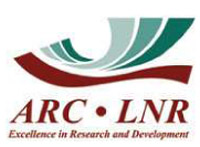 The ARC-Small Grain in Bethlehem is available for more information. Contact Cathy de Villiers or Dr Scott Sydenham at 058 307 3400, devilliersc@arc.agric.za or sydenhams@arc.agric.za.
The ARC-Small Grain in Bethlehem is available for more information. Contact Cathy de Villiers or Dr Scott Sydenham at 058 307 3400, devilliersc@arc.agric.za or sydenhams@arc.agric.za.
Publication: June 2018
Section: On farm level



